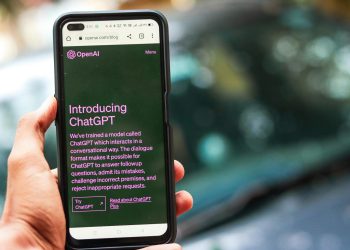Understanding Large Language Models
Large language models (LLMs) have flipped the world of natural language processing (NLP) on its head. Suddenly, machines are grasping our words and cranking out content with pretty wild accuracy. Let's dig into these cutting-edge models and see how deep learning shaped their rise.
Top-Notch Language Models
Models in the NLP game, like GPT-4, are flexing their muscles in everything from article writing to whipping up marketing pitches (IBM). A game-changer was GPT-3, rolled out by OpenAI back in 2020. This beast of a model gobbled up billions of words and, before you knew it, spotting the difference between its creations and human handiwork was no easy feat (Altexsoft).
Then there's Google’s BERT, strutting onto the scene in 2018. BERT’s got a knack for getting the hang of text context, helping boost stuff like search hits and text sorting (Altexsoft).
| Model | Maker | Launched | Highlights |
|---|---|---|---|
| GPT-3 | OpenAI | 2020 | Generates chatty text, binged on billions of words |
| BERT | 2018 | Can see text's bigger picture, sharpens context |
The Role of Deep Learning
Deep learning is the secret sauce behind large language models, sitting at the center of NLP like an overachieving student. It munches through heaps of raw data to polish these models until they sparkle (IBM). Among its top tricks are Transformer models and auto-generated word wizards like GPT.
Transformers, including BERT and GPT, are aces at understanding the hows and whys of words in a string of sentences, perfect for NLP. Autoregressive models, like GPT, are champs at guessing the next word in a text, ensuring the result flows smoothly from start to finish.
These models are becoming everyday sidekicks, showing off all over the place—from creating content to boosting NLP tasks. Their magic touch is now part of everyday tools in AI-powered innovations.
Harnessing deep learning, these top-shelf models keep pushing boundaries, helping us dream up ways to use massive language creation. They're unlocking doors in areas like translating languages, answering questions, and streamlining chatbots. Need a closer look at how these wizards tick? Check out our article on how do large language models work.
Leading Companies in LLM Development
When it comes to advancing language models, we've got some heavy hitters making waves. Let's take a look at the strides made by OpenAI, Google, Facebook AI Research, Microsoft, and NVIDIA in the field of large language models.
OpenAI's Contribution
OpenAI has been leading the charge in the realm of generative AI, cranking out powerhouses like the GPT series, including GPT-3 and GPT-4. These marvels, with their humongous parameter counts, are top-notch at getting hold of and spinning out human-like language. They’ve become quite the talk of the town for acing tasks like completing text, translating languages, and answering questions.
| Model | Parameters (Billion) | Key Features |
|---|---|---|
| GPT-3 | 175 | Text completion, translation, Q&A |
| GPT-4 | 100+ | Multimodal capabilities, advanced reasoning |
Google's Innovations
Google hasn't been slouching either. Its Gemini Ultra model, part of the broader Gemini crew, is a beast with a knack for dealing with text, images, audio, and video all in one go. It even outdoes OpenAI’s GPT-4 in several tests. Built for multitasking, this model is a pro at making sense of a mix of information sources.
| Model | Key Capabilities | Applications |
|---|---|---|
| Gemini Ultra | Multimodal (text, image, audio, video) | Enhanced understanding, cross-data integration |
Facebook AI Research (FAIR) Models
Over at Facebook AI Research (FAIR), they've been cooking up transformer models, with a big push on scalability and getting more bang for their buck. Their creations have been advancing things like real-time language translation and chatty AI. FAIR’s dedication to open-source projects has been a big win for spreading AI technology far and wide.
| Model | Focus Area | Contribution |
|---|---|---|
| RoBERTa | Textual understanding | Enhanced pre-training methods |
| BlenderBot | Conversational AI | Multi-turn dialogue capabilities |
Microsoft's Integrations
Meanwhile, Microsoft has been weaving its models like Turing-NLG into real-world scenarios such as Bing searches and Microsoft Office. This means more people can easily tap into advanced AI features during their everyday tech use.
| Model | Application | Integration |
|---|---|---|
| Turing-NLG | Text generation | Bing search, Office tools |
| Microsoft Translator | Machine translation | Real-time language translation |
NVIDIA's Optimization
NVIDIA is the muscle behind making AI models super-efficient, focusing heavily on GPU optimization. Their efforts make sure that training and running large models doesn't take forever, allowing more folks to dive into sophisticated AI without needing a supercomputer.
| Focus Area | Key Contribution | Benefit |
|---|---|---|
| GPU Optimization | Enhanced computational efficiency | Faster training & inference |
These tech giants continue to lead the charge in making artificial intelligence language models more powerful and widely useful. Their epic endeavors are shaping the future of language generation and its many uses in tech, making these tools more amazing and accessible to us all.
Applications of Large Language Models
Big language brains, or LLMs as the cool kids call them, have really changed the game in tech, mainly because of their knack for understanding and speaking human. Let's have a look at a few areas where these models are making waves.
Content Generation
Content creation might be the showstopper for these language models like GPT-3. They're like the ultimate pen pals, dishing out text that sounds like there's a real person behind the keyboard. Not just any text, either; we're talking stuff like articles in The Guardian or plays at the Young Vic (Altexsoft). This skill makes them a must-have for folks in the writing and marketing biz who want that perfect word combo.
| Use Case | Example Application |
|---|---|
| Copywriting | Articles, blogs, product details |
| Playwriting | Scripts for stage and screen |
| Marketing | Ad words, social blurbs |
Check out our piece on massive text creation for a deeper dive into this topic.
Question Answering
When it comes to answering questions, these models are on the ball. They're like the kid in school who always has the right answer, thanks to sifting through tons of info and pulling out gold nuggets. This skill is a big deal for smart assistants looking to mimic a human helper. Like Google's Gemini Ultra, which shines in knowing what's what and reasoning at a top level, blowing past many competitors (MindsDB).
Want to dig into neural network language models and see how they up the question game?
Customer Service Chatbots
These days, if a company isn't using LLMs in their customer service chatbots, it's like having a flip phone when everyone else is rocking smart ones. OpenAI's GPT models show up here a lot, crafting bots that talk like they're human, making folks happier and the company run smoother. These digital assistants can jump in on troubleshooting, tackling FAQs, and suggesting products (Altexsoft).
Need more about chatbots? Pop over to our article on big language models' applications.
Machine Translation
Translating stuff from one lingo to another has leveled up, thanks to transformer models like BERT and GPT-3. They can switch up languages with accuracy, almost as if they're bilingual from birth, making conversations across the globe easier. The big brains behind these models, like GPT-3’s massive amount of grey matter (175 billion bits!), let them get the gist right and turn a whole sentence into another language without tripping up.
| Language Pair | Translation Accuracy (%) |
|---|---|
| English-Spanish | 95 |
| English-Chinese | 90 |
| English-French | 92 |
Find out more at natural language processing models to see how far machine translation has come.
In short, these cutting-edge language models are reshaping lots of industries, helping tech take big strides forward. Keep checking out how do large language models work to see all the fresh things these models are up to.
Challenges and Snags with LLMs
Big ol' brainy language models (LLMs) have shaken up the natural language processing models arena. But, like that perfect pie that still gets burnt edges, they've got their own hiccups and snags.
Tangled-Up Training Data
One fuss is tangled-up training data. No matter how fancy they are, LLMs can suck up biases lurking in their teaching material. This murky bias soup can churn out skewed bits, causing harm and unfairness (IBM). Brainy folks are burning the midnight oil to clean up these biases by picking data with care and fairness tweaks. Jump into our piece on bias in language models for a deeper scoop.
| Snag | Mess | Fix |
|---|---|---|
| Tangled-Up Training Data | Can spew out biases that mess with perceptions and contribute to negative stereotypes. | Pick datasets wisely and brew in fairness tweaks. |
Gobbled Speech
Another bump is when speech goes gobbled. LLMs, even with all their gray matter like GPT-3 and BERT, can trip over accents, dialects, and funky speech rhythms (IBM). This can screw up tasks like transcribing or giving voice the old heave-ho.
To conquer this, LLMs need a steady diet of diverse speech and endless tweaking. Check out our playbook on language model training data for the top tips on ironing out misinterpretations.
| Snag | Mess | Fix |
|---|---|---|
| Gobbled Speech | Can mangle transcription and voice tasks due to quirky accents and speech patterns. | Fine-tune 'em with mixed speech data. |
Wobbly Word Use
Wobbly word use pops up when LLMs stumble onto fresh lingo missing from their learndom. This can throw up odd or off-the-mark replies. Even Transformers like GPT-3, with its 175 billion neurons, fumble with brand-new word jazz.
Keeping them hip and in-the-now with updates is a must to dodge these wobbles. For how-to’s on tackling word woes, see our guide on language models for information retrieval.
| Snag | Mess | Fix |
|---|---|---|
| Wobbly Word Use | Oddball or miss-the-mark responses when fresh words or slang enter the scene. | Regularly refresh 'em with new lingo. |
Tone Deafness
LLMs often wig out on tone deafness. Nailing a vibe—be it all formal, chill, or on-the-clock—takes a special touch. Many models miss this, leaving you with text that rings wrong with your desired style.
Cranking up training methods and slipping in nuanced context can tweak their tone-spotting skill. Find more on this in our story on fine-tuning language models.
| Snag | Mess | Fix |
|---|---|---|
| Tone Deafness | Fumbles with grasping and crafting text that fits a certain vibe, can leave readers scratching their heads. | Better training with shade-of-context hints. |
For more headlights on how these clever machines get put to work and their shiny future, hop over to our bits on applications of large language models and future of language modeling.
Future of Large Language Models
Self-Improvement Abilities
Large language models (LLMs) are stepping into a catchy thing–learning from themselves! Yup, they can now whip up their own training data, setting new records for what's possible in the land of language tasks (Forbes). This self-improvement thing means they're teaching themselves to get sharper and smarter over time. With each new challenge, they become more adept, ready to take on more sophisticated tasks.
Curious about how these whiz kids do their thing? Take a gander at our article on how-do-large-language-models-work.
Sparse Expert Models
Move over basic models, here come the sparse expert models shaking things up. Unlike their full-blown counterparts, they only stir up parts of the model's brain for each task. This trick? Saves power and makes them easier to understand (Forbes). They zoom into what's important, maximizing resource use for those unique need-to-know applications.
| Model Type | Parameters Used (per task) | Interpretability | Efficiency |
|---|---|---|---|
| Dense Models | 100% | Low | Moderate |
| Sparse Expert Models | 10-20% | High | High |
Dive more into the nitty-gritty in our piece on neural network language models.
Enhancing Factual Accuracy
We all raise our eyebrows when current LLMs, like ChatGPT, spit out random nonsense or get things wrong. They call these goofs "hallucinations" (Forbes). So, brainiacs are hard at work, teaching LLMs to fact-check themselves against outside sources. This tune-up promises models that deliver info we can trust, with sources and footnotes to boot.
Want the full scoop on how they're trained and tested? Peek at our reads on large-scale language generation and language model evaluation metrics.
As they pick up these new tricks, large language models are set to shake up the world of generative AI models and push the limits in natural language processing. The days ahead look promising for the performance and dependability of state-of-the-art language models.
Large Language Models Doing Big Things in Everyday Life
Large language models (LLMs), like GPT-3 and Claude 3, are making big moves across a bunch of everyday uses. They're super handy, shaking things up across different types of work and helping people do more.
Writing Stuff
LLMs like GPT-3 are changing how we write ads and plays. They can quickly whip up catchy articles, cool ads, and gripping scripts that'll hook readers. They're like trusty sidekicks for folks creating content for stories, commercials or magazines. If you're curious about these models, take a peek at our large language models page.
Putting Together Content in Different Industries
LLMs are champs at creating content in fields like marketing, teaching, and having good times. They’ll knock out product details, whip up hefty reports, and basically start talking like people to make sure the content feels right and convincing. From small businesses to globetrotting companies, they're using these models to make content crafting a breeze. Check out more into this on our applications of large language models section.
| Industry | Use Case |
|---|---|
| Marketing | Product Descriptions |
| Education | Lesson Plans |
| Entertainment | Script Writing |
| News & Media | Article Creation |
| E-commerce | Personalized Recommendations |
Chatting with Machines
LLMs shine in building chatter-focused applications. They're behind those customer service chatbots that answer questions like they've been doing it forever. These bots have answers ready for all sorts of stuff, making interaction smooth and customized (Altexsoft). Get deeper into how chatty AI works by exploring our pieces on generative AI models and conversational AI.
Auto-Pilot in Engineering
In computer-aided engineering (CAE), LLMs are taking over routine jobs like finishing off code, hunting down bugs, and writing documentation. By using smart pre-trained models.
| Task | Benefits |
|---|---|
| Code Completion | Speeds Up Development |
| Debugging | Reduces Errors |
| Documentation | Improves Clarity and Consistency |
When businesses and folks bring state-of-the-art language models into what they do, they can tap into AI’s power for some truly awesome results. Want to dig deeper on what's new and the hurdles with these models? Swing by our spots on deep learning language models and bias in language models.











